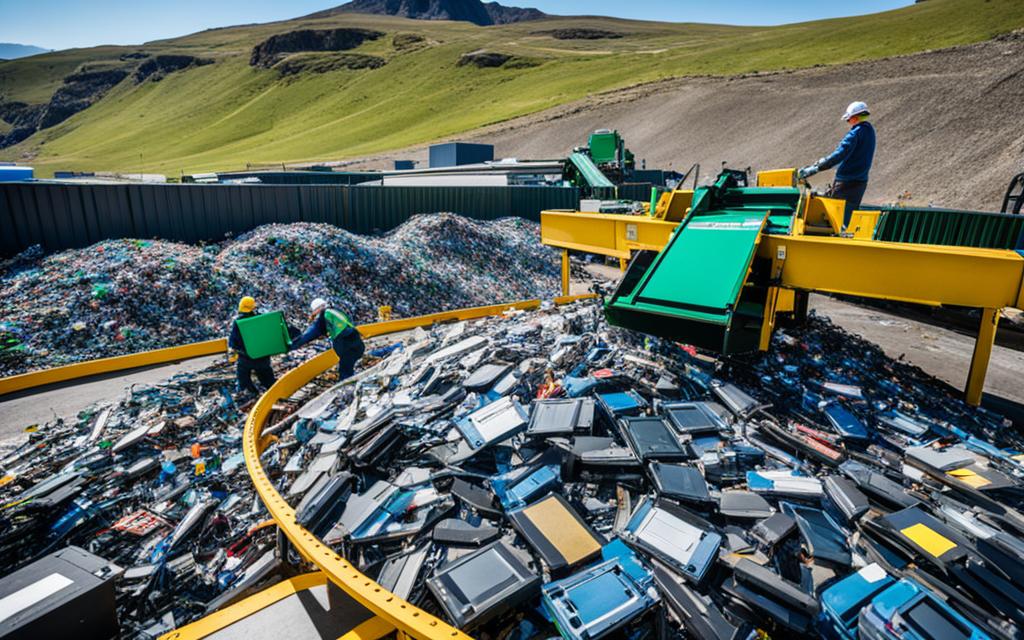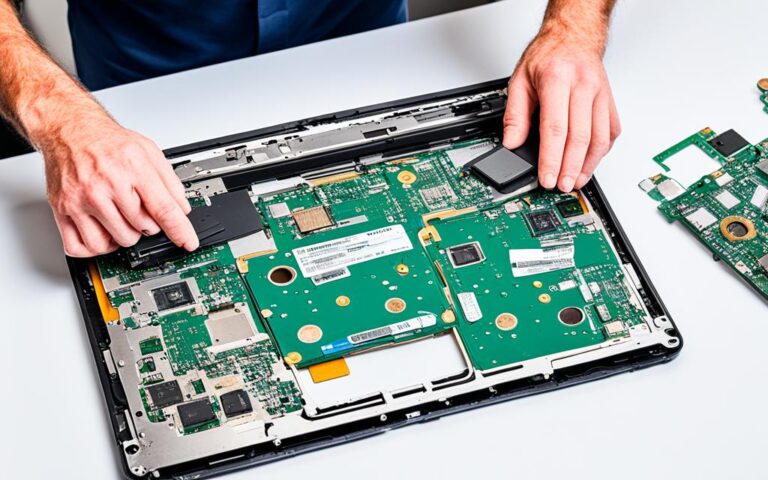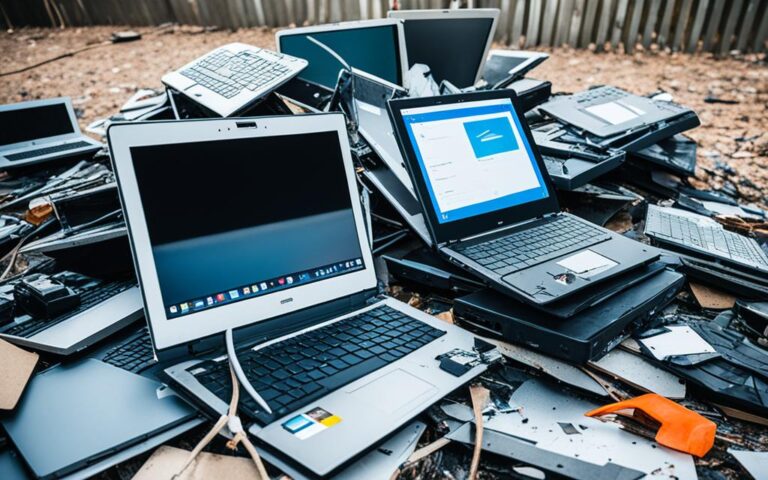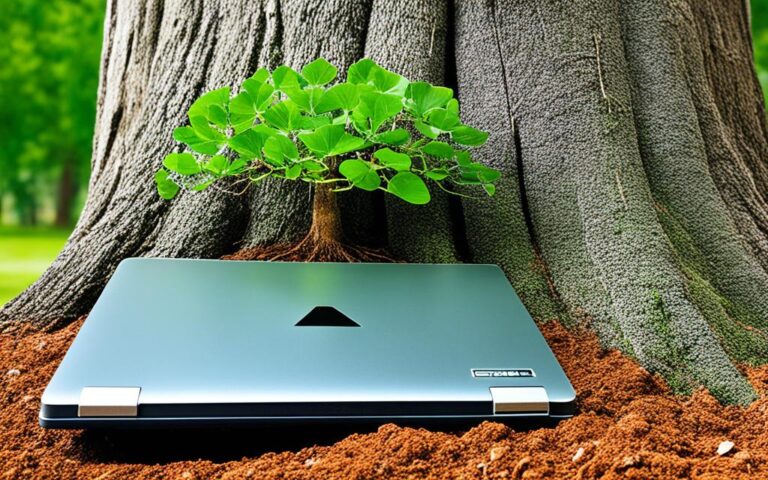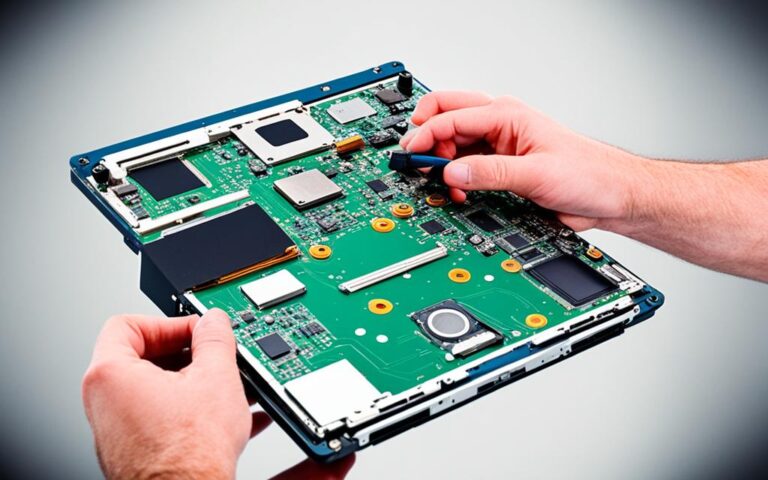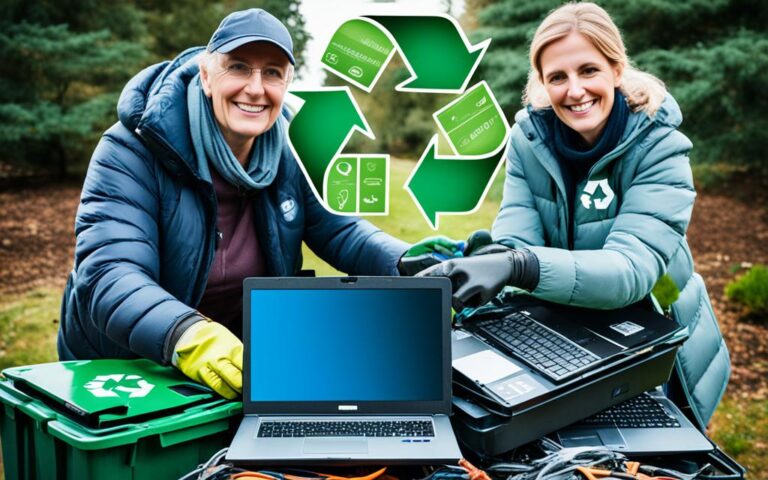The Challenge of Recycling Laptops: Materials and Methods
Laptop recycling is an essential practice in our increasingly digital world. However, this process poses numerous challenges due to the complex materials involved and the methods used for recycling. In order to ensure a sustainable future, it is crucial to understand and address these challenges.
When it comes to laptop recycling, one of the major challenges is the diverse range of materials used in their construction. Laptops contain a variety of components such as metals, plastics, glass, and chemicals. Each of these materials requires specialized recycling techniques, making the process more intricate and time-consuming.
Another challenge lies in the methods used for laptop recycling. The disposal of electronic waste, including laptops, must be done in an environmentally friendly manner to prevent pollution and preserve valuable resources. However, the existing recycling methods often struggle to efficiently extract and recycle these materials.
In order to overcome these challenges, ongoing research and development are essential. Advancements in recycling technologies and processes can enable the more effective and efficient recovery of materials from discarded laptops. This can minimize the environmental impact of electronic waste and maximize the reuse of valuable resources.
By understanding the complexities of laptop recycling and investing in innovative solutions, we can ensure a greener and more sustainable future. In the following sections, we will delve deeper into the importance of computer recycling, the challenges faced in corporate IT recycling, the factors shaping the future of recycling, and the potential solutions that lie ahead.
The Importance of Computer Recycling
Computer recycling is a critical practice that brings numerous benefits to our environment, economy, and society as a whole. By recycling computers, we can contribute to reducing landfill waste, conserving natural resources, promoting economic growth and job creation, and bridging the digital divide.
One of the key benefits of computer recycling is the reduction of landfill waste. Computers contain various hazardous materials such as lead, mercury, and cadmium, which can contaminate the soil and water if improperly disposed of. By recycling computers, we prevent these harmful substances from ending up in landfills, thereby protecting our environment and the health of future generations.
Another significant advantage of computer recycling is the conservation of natural resources. Computers are made up of valuable materials such as metals, plastics, and glass, all of which can be reused or reprocessed. By recycling computers, we extract these materials and use them to manufacture new products, reducing the need for virgin resources and minimizing the environmental impact of resource extraction.
Furthermore, computer recycling plays a vital role in promoting economic growth and job creation. The recycling industry not only provides employment opportunities for individuals involved in collection, processing, and refurbishment but also generates demand for related services and products. By supporting computer recycling, we contribute to the growth of a sustainable and thriving economy.
Lastly, computer recycling helps bridge the digital divide. Many individuals and communities, especially in developing countries, do not have access to computers and other electronic devices. By recycling and refurbishing computers, we can make these devices more affordable and accessible, enabling more people to participate in the digital world and benefit from the vast opportunities it offers.
For organizations operating in a corporate setting, computer recycling holds even greater significance. With the constant upgrading of technology, businesses dispose of a large quantity of equipment regularly. Proper recycling of computers in corporate settings ensures responsible waste management and supports the circular economy.
Computer recycling is not just an environmental responsibility but a strategic business decision that can yield numerous benefits. By embracing computer recycling, organizations can minimize environmental impact, enhance their corporate social responsibility image, and even potentially reduce costs through the recovery and reuse of valuable components and materials.
| Benefits of Computer Recycling |
|---|
| Reduces landfill waste |
| Conserves natural resources |
| Promotes economic growth and job creation |
| Bridges the digital divide |
Challenges in Corporate IT Recycling
Corporate IT recycling encounters numerous challenges that hinder efficient and cost-effective practices. These challenges encompass the collection of equipment, sorting and dismantling processes, data security concerns, reducing recycling costs, and the lack of demand for recycled materials.
Collection of Equipment
The collection of IT equipment poses difficulties due to its bulkiness and weight. Transporting and storing large quantities of equipment can be both cumbersome and costly for corporations. Finding suitable vendors and logistics solutions becomes paramount in streamlining this aspect of recycling.
Sorting and Dismantling
The sorting and dismantling of IT equipment is a time-consuming and labor-intensive process. Precise categorization is crucial for efficient recycling and recovering valuable materials. Due to the complex design of electronic components, manual labor often becomes necessary to separate various parts, such as plastics, metals, and circuit boards.
Data Security Concerns
Data security concerns arise when disposing of computers and other IT equipment. Proper data destruction is vital to protect sensitive information and comply with data privacy regulations. Companies must use secure methods, such as data wiping or physical destruction, to ensure data confidentiality before recycling the devices.
Reducing Recycling Costs
Recycling technologies designed to extract valuable materials from IT equipment can be costly, impacting the profitability of recycling endeavors. Finding ways to reduce these costs without compromising the integrity of the recycling process remains a challenge. Further advancements in recycling technologies are needed to make them more affordable and economically viable for corporations.
Lack of Demand for Recycled Materials
Another challenge faced in corporate IT recycling is the limited demand for recycled materials. Despite the push for sustainability, some industries may not prioritize the use of recycled materials in their manufacturing processes. This lack of demand can hinder the profitability and sustainability of the recycling industry.
| Challenges | Solutions |
|---|---|
| Collection of equipment | Seeking suitable vendors and logistics solutions |
| Sorting and dismantling | Advancing automation technologies for efficient separation of components |
| Data security concerns | Implementing secure data destruction processes |
| Reducing recycling costs | Developing cost-effective recycling technologies |
| Lack of demand for recycled materials | Promoting awareness and encouraging sustainable manufacturing practices |
Despite these challenges, innovation and collaboration between enterprises, recycling facilities, and regulatory bodies offer promising solutions. By addressing the obstacles hindering corporate IT recycling, businesses can contribute to a more sustainable and environmentally responsible future.
Factors Shaping the Future of Corporate IT Recycling
As the corporate IT recycling industry continues to evolve, several factors will undoubtedly shape its future trajectory. In this section, we will explore the key elements driving change and influencing the direction of corporate IT recycling.
Regulatory Compliance and Responsible Practices
Regulatory compliance and changes in policies play a crucial role in promoting responsible recycling practices within the corporate IT sector. Governments around the world are recognizing the environmental impact of electronic waste and implementing stringent regulations to ensure proper disposal of outdated or obsolete IT equipment. Compliance with these regulations is not only a legal requirement but also a moral obligation for businesses, as it helps minimize the environmental impact and protect public health.
Emerging Technologies and Innovation
The rapid advancement of emerging technologies is revolutionizing the landscape of corporate IT recycling. Artificial intelligence, blockchain, and the Internet of Things hold tremendous potential in improving the efficiency and cost-effectiveness of recycling processes. AI-powered algorithms can aid in the identification and sorting of recyclable materials, optimizing the extraction and recovery of valuable resources. Blockchain technology can enhance transparency and traceability in the recycling supply chain, ensuring proper documentation and accountability. The Internet of Things enables real-time monitoring of recycling processes, facilitating preventive maintenance and enhancing overall operational efficiency.
Changing Consumer Behaviors and Sustainability
Consumer behaviors and preferences are instrumental in shaping the future of corporate IT recycling. Increasing awareness and demand for sustainable products have the potential to drive the adoption of recycling practices. Consumers are becoming more conscious of the environmental impact of electronic waste and the need to reduce their carbon footprint. Businesses that prioritize sustainability and actively engage in responsible recycling not only appeal to environmentally conscious consumers but also contribute to building a positive brand image and reputation.
“Sustainability is no longer a choice but a necessity in today’s business landscape. Consumers are demanding sustainable practices and responsible recycling, and companies must rise to the challenge.” – Elena Gomez, CEO of Sustainable Solutions Ltd.
Additionally, the circular economy concept, which emphasizes the reuse, repair, and recycling of products, is gaining widespread recognition. Corporations are exploring innovative ways to incorporate recycled materials into their manufacturing processes, enabling the production of more eco-friendly and sustainable products.
With regulatory compliance, emerging technologies, and changing consumer behaviors driving the future of corporate IT recycling, businesses must adapt to these trends to remain competitive and ensure a sustainable future.
Conclusion
In conclusion, the challenges faced in laptop recycling, such as the collection of equipment, data security concerns, and the lack of demand for recycled materials, can be overcome through sustainable practices and the adoption of emerging technologies. By working together, businesses and individuals can contribute to a more sustainable future.
To address the collection challenge, organizations can implement convenient and accessible laptop recycling programs, encouraging individuals to responsibly dispose of their old laptops. This can be achieved through partnerships with recycling companies or the establishment of drop-off points at designated locations.
Data security concerns can be mitigated by employing secure data destruction techniques, including software wiping and physical destruction of storage devices, ensuring that sensitive information is securely erased before recycling. This will protect individuals and businesses from potential data breaches and maintain trust in the recycling process.
Furthermore, encouraging the demand for recycled materials is crucial for the future of laptop recycling. By promoting the use of refurbished laptops and supporting businesses that incorporate recycled materials into their products, we can create a market for these materials, driving the growth of the recycling industry.
FAQ
What are the challenges in laptop recycling?
The challenges in laptop recycling include the collection of equipment, data security concerns, and the lack of demand for recycled materials.
Why is computer recycling important?
Computer recycling is important because it helps reduce landfill waste, conserve natural resources, promote economic growth and job creation, and bridge the digital divide.
What are the challenges in corporate IT recycling?
The challenges in corporate IT recycling include the collection of equipment, sorting and dismantling of components, data security concerns, reducing recycling costs, and the lack of demand for recycled materials.
What factors will shape the future of corporate IT recycling?
Regulatory compliance and changes in policies, emerging technologies such as artificial intelligence, blockchain, and the Internet of Things, and consumer behaviors will shape the future of corporate IT recycling.
How can businesses and individuals contribute to laptop recycling?
Businesses and individuals can contribute to laptop recycling by promoting the use of recycled and refurbished products, and by participating in recycling efforts to mitigate the environmental impact of electronic waste.

